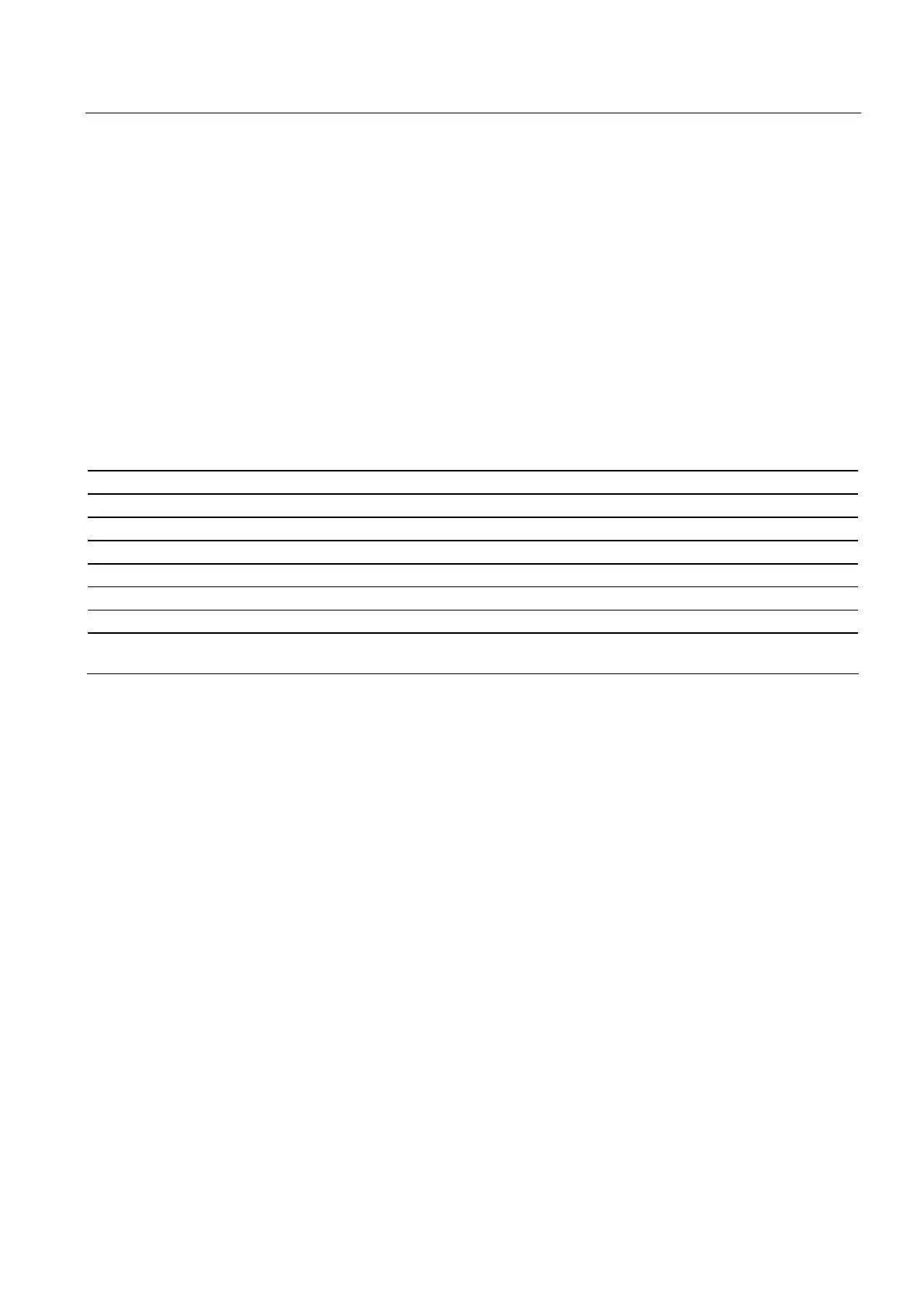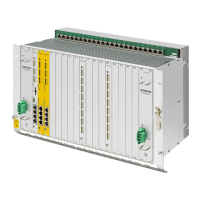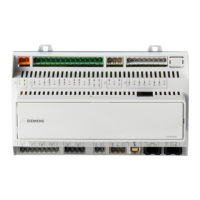Detailed description
2.1 Mode group
Basic logic functions: Mode group, channel, program operation, reset response (K1)
Function Manual, 11/2006, 6FC5397-0BP10-2BA0
13
For further information about other axis configurations such as axis containers, link axes,
reciprocating axes, main run, rotary, linear, master and slave axes and the various
implementations, please refer to:
References:
/FB1/ Function Manual, Basic Functions; Axes, Coordinate Systems, Frames (K2)
/FB1/ Function Manual Basic Functions; Spindles (S1)
also see Catalogue NC 60 / NC 61
Mode groupspecific interface signals
The exchange of mode groupspecific signals to/from the mode group is transferred to DB11
in the user interface. In this way, the mode group can be monitored and controlled from the
PLC or NCK.
The following table lists all mode groupspecific interface signals:
Modegroup signals (PLC => NCK) Modegroup signals (NCK → PLC)
Mode group Reset Mode strobe: JOG, MDA, AUTOMATIC
Mode group Stop axes plus spindles Machine function strobe: REF, REPOS, TEACH IN
Mode group Stop All channels (1 to 10, max.) in Reset state
Mode change Mode group Ready
Operating mode: JOG, MDA, AUTOM. Active mode: JOG, MDA, AUTOMATIC
Single block: Type A, Type B Digitizing
Machine function:
REF, REPOS, TEACH IN,
Active machine function: REF, REPOS, TEACH IN
var. INC, 10000 INC ......... 1 INC
Change in mode group
A change in the configuration of a mode group with respect to its assigned channels requires
a subsequent POWER ON.
The change is made via machine data:
MD10010 $MN_ASSIGN_CHAN_TO_MODE_GROUP.
Mode group numbers must be assigned contiguously starting with 1.
Machine data
There are no mode groupspecific machine data.

